Online hatred decreases but becomes radicalized. Vox report
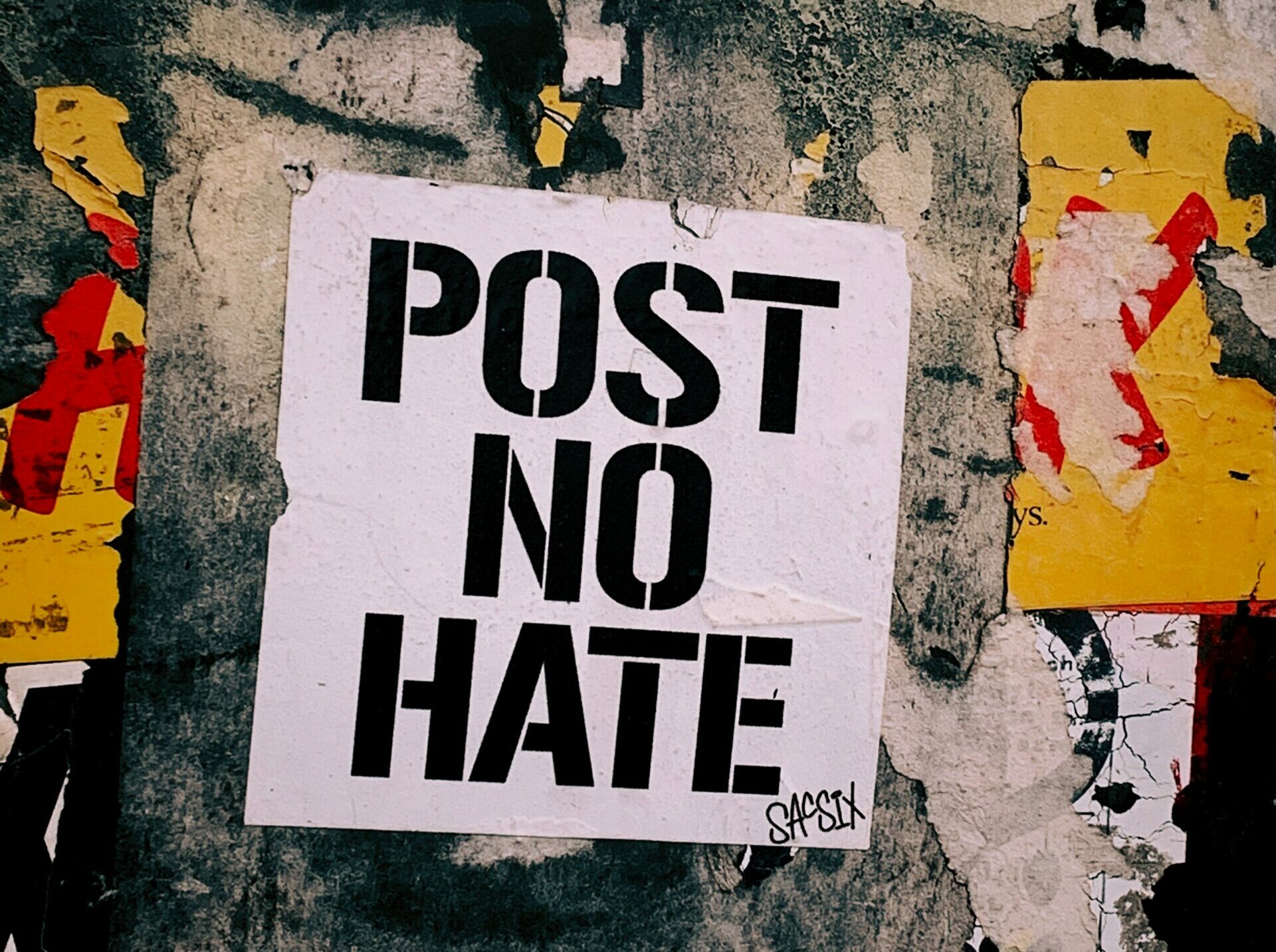
In the year of the pandemic, online hatred focuses on women, especially if they work and against Jews and Muslims. Here are the results of the fifth edition of the map curated by Vox, the Italian Observatory on Rights that photographs hatred via social media
Online hatred diminishes but radicalises. Women remain the most affected category, followed by Jews.
Here is what emerges from the fifth edition of the Map of Intolerance, the project conceived by Vox, the Italian Observatory on Rights, in collaboration with the State University of Milan, the University of Bari Aldo Moro, Sapienza-University of Rome and IT'STIME of the Catholic University of Milan.
All the details.
LOWER ONLINE HATE
This year, 1,304,537 tweets were extracted and analyzed, detected between March and September 2020. Among these, 565,526 were negative tweets.
Online hatred therefore decreased significantly compared to 2019. During the two surveys of 2019 (March-May and November-December period), a total of 215,377 tweets were collected in the first case, of which 151,783 were negative, while in the second case 268,433 tweets, of which 179,168 were negative (approximately 70% vs. 30% positive in the first survey; approximately 67% vs. 33% positive in the second survey).
In the 2020 survey (March-September period), a total of 1,304,537 tweets were collected, of which 565,526 were negative (about 43% vs. 57% positive). What emerges is a significant decrease in negative tweets compared to the total number of tweets collected.
And even if the period taken into consideration in this year's survey is longer, the data is still important, the researchers point out.
"A decisive factor in this year's analysis was the unleashing of the pandemic from Covid-19" observes the research, according to which "anxieties, fears, difficulties have piled up in people's daily lives, helping to create an endemic fabric of tension and polarization of conflicts ”.
BUT HATES HIMSELF IN A MORE ROOTED AND RADICAL WAY
The decrease indicates a different scenario and an ongoing mutation, compared to past years: the detection, for example, of the peaks of hatred indicates an important resurgence and a persistence (also detected by the number of tweets) that would seem to highlight a different use of social media.
In other words, “an almost more“ professional ”use, where circles and groups of haters concentrate the production and dissemination of hate speech. In short, one hates in a different, more rooted and radical way, even if the phenomenon has decreased quantitatively: this incisiveness of intolerance in the online world is worrying, but also the specular diffusion of this phenomenon at a geographical level ".
MISOGINIA STILL PREPONDERANT
Misogyny deserves a particular focus, which is still predominant. In fact, the research shows that one in two haters via social media attacks women.
The researchers note a peculiarity: “in addition to the omnipresent body shaming attitudes, many attacks have had as content the competence and professionalism of the women themselves”.
"It is the work of women, therefore, that emerges this year as a co-factor triggering misogynistic hate speech: an element that has never appeared with this evidence in previous surveys", the research underlines, "which seems to lead back to the broader reflection on job opportunities for women linked to the new way of working during the pandemic, with a focus on smart working ".
As for the geographical distribution, the greatest concentration of hate speech towards women was recorded in almost all of northern Italy. And in the regions of Lazio, Campania and Puglia.
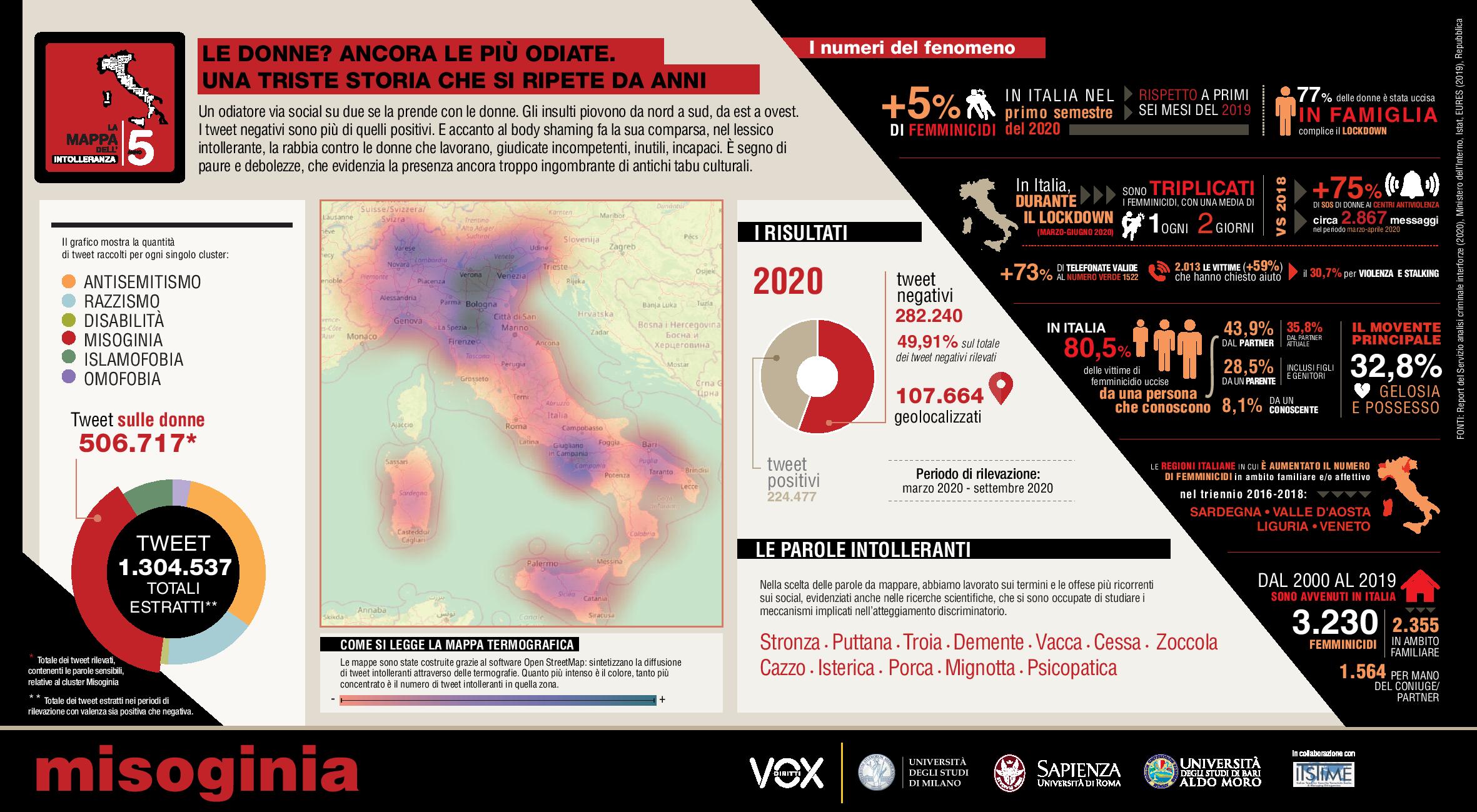
THE CASE OF JOURNALISTS
A particular focus of the Map of Intolerance project in its fifth edition consists in an analysis of online hatred referred to some profiles of journalists and journalists. In other words, both the level of attacks suffered and the potential for interception and catalysing of hate speech by some information professionals are highlighted.
The first figure that emerges is the number of tweets with discriminatory or hateful language , higher than half (57.51%) of the total number of tweets detected on the profiles examined.
The researchers point out that “journalists are not verbally attacked only with the body shaming modality, but offended for issues related to their profession or professionalism. The latter is a fact worth focusing on, also in consideration of the attacks suffered via social media by journalists in the last year. In a general framework that has seen attacks on social media against journalists and journalists increase to 40% of the total ".
MUSLIMS
Another target of the haters are the Muslims. "The tweets of hatred and discrimination referring to Muslims come close to the more general category of xenophobia (12.01% of negative tweets out of the total number of negative tweets detected in the first case, 14.40% of negative tweets out of the total number of negative tweets detected in the second) ”underlines the research.
Not surprisingly, 65% of Italian Muslims claim to have suffered acts of violence, prejudice or discrimination.
Finally, it should be emphasized that the geographical distribution of hateful or discriminatory tweets against Muslims is more widespread throughout the national territory, although there are concentrations in some cities in Northern Italy. Less common in Lazio and Campania.
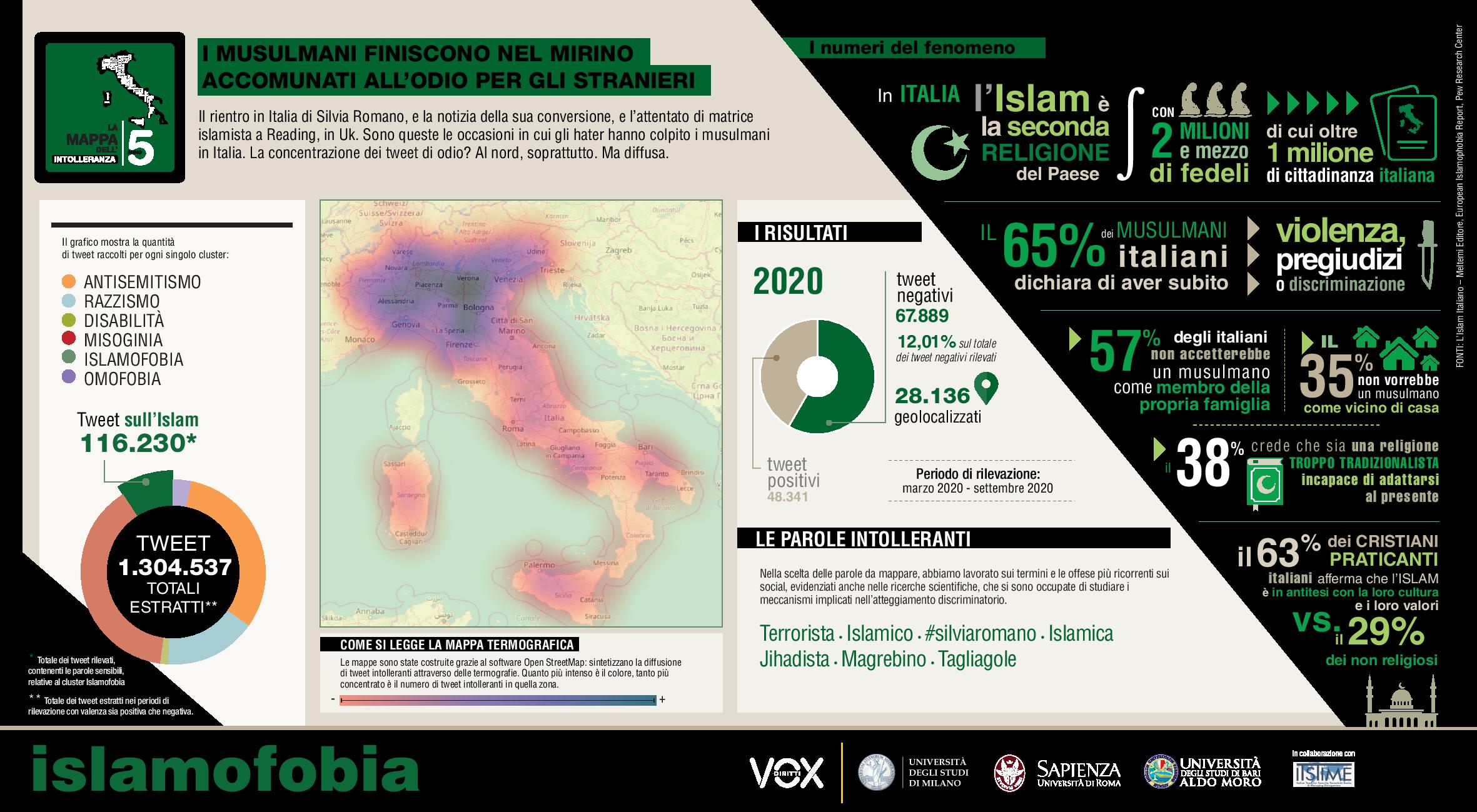
THE CASE OF SILVIA ROMANO
With regard to Muslims, the highest peaks of words and languages of hate occurred following the release and return to Italy of the aid worker Silvia Romano , as well as following the attack in Reading on 20 June 2020. The Silvia case Romano unleashed the online haters with peak crowds of Islamophobic tweets on 10 and 12 May: respectively the day of landing in Italy and returning to his home in Milan.
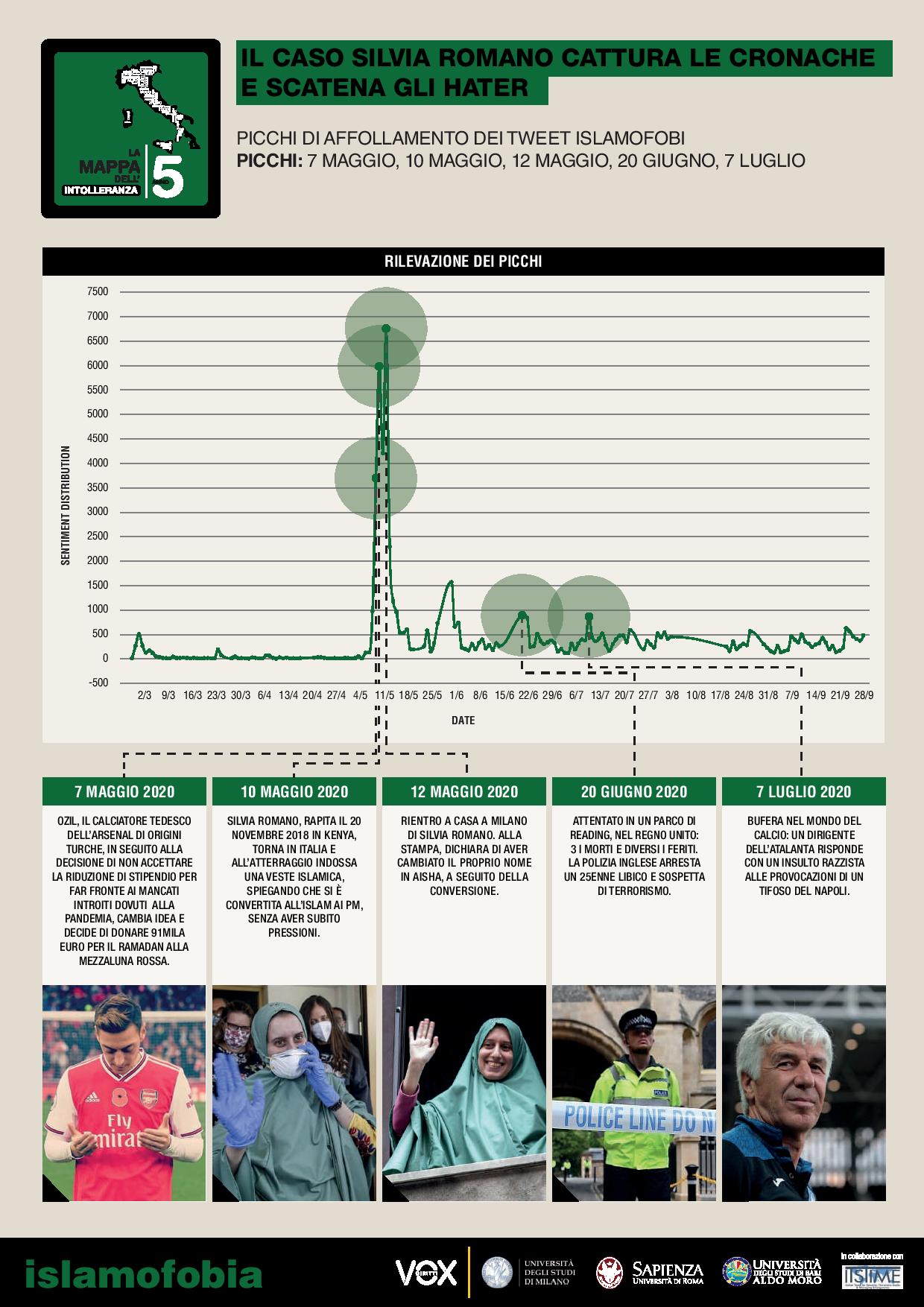
ANTI-SEMITISM
Another important focus concerns anti-Semitism, growing as an absolute value compared to 2019 (today we are at 18.45% of the total negative tweets detected, in 2019 we were at 10.01%). "In this case, the upward trend recorded over the years is worrying, going from 2.2% in 2016, in a constant progression, to current data", notes the research.
And if unfortunately the outbreak of heavy outbreaks of anti-Semitism in the course of historical eras crossed by crises and fears is unfortunately all too well known, it must be added that, by disaggregating the data, a more positive curve is instead captured. Indeed, of all those who tweeted about Jews, positive tweets this year outweigh the negatives for the first time: 74.6% positive tweets, vs 25.4% negative. To return to the comparison with the period November – December 2019, the percentage was clearly reversed (69.75% negative vs. 30.25% positive).
The peaks of discriminatory tweets against Jews were recorded on the occasion of April 25 and especially Liliana Segre's birthday in September.
As for the geographical distribution, however, anti-Semitism is concentrated in the Piedmont and Lombardy regions and in the cities of Rome and Naples.
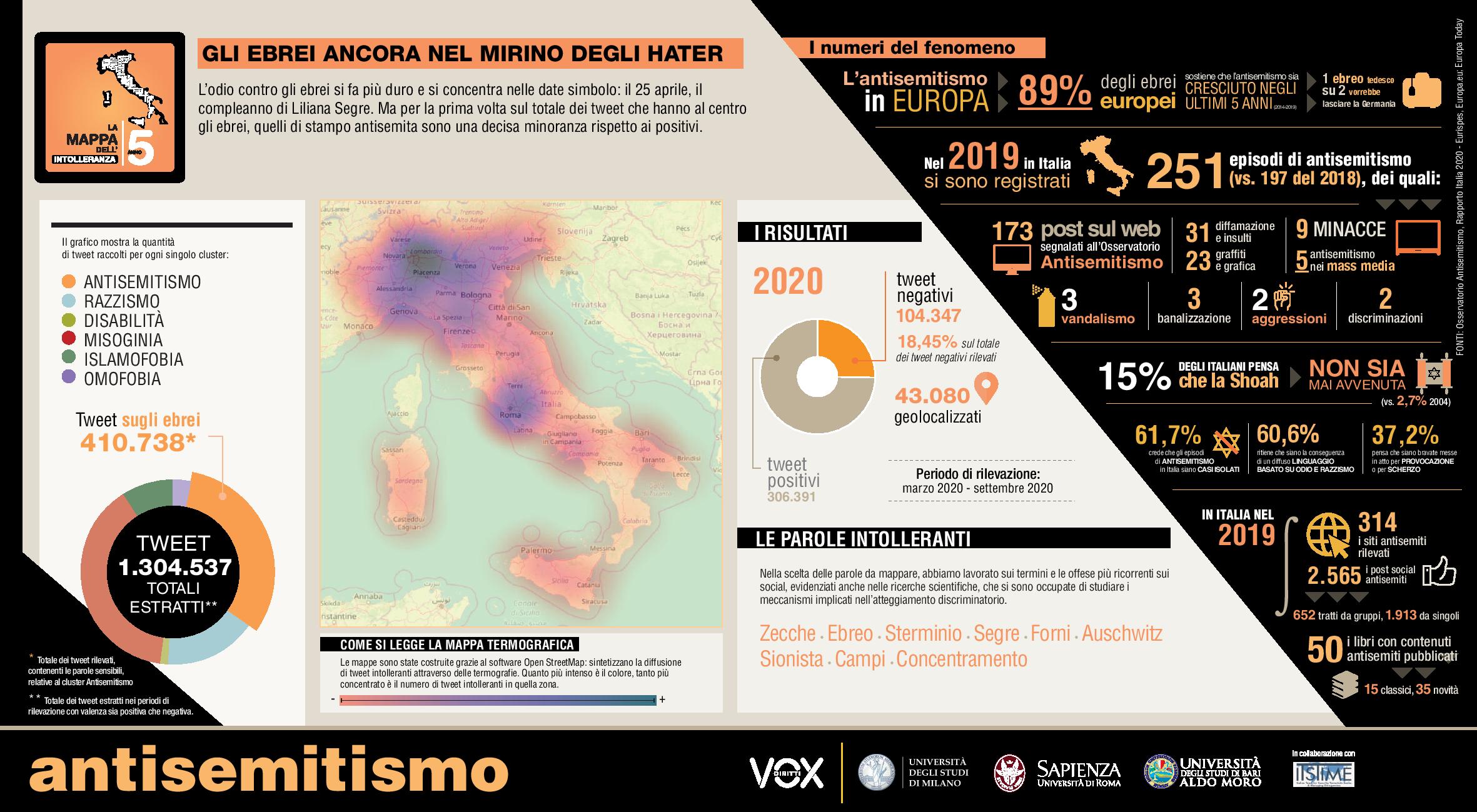
THE MOST INTOLERANT CITIES
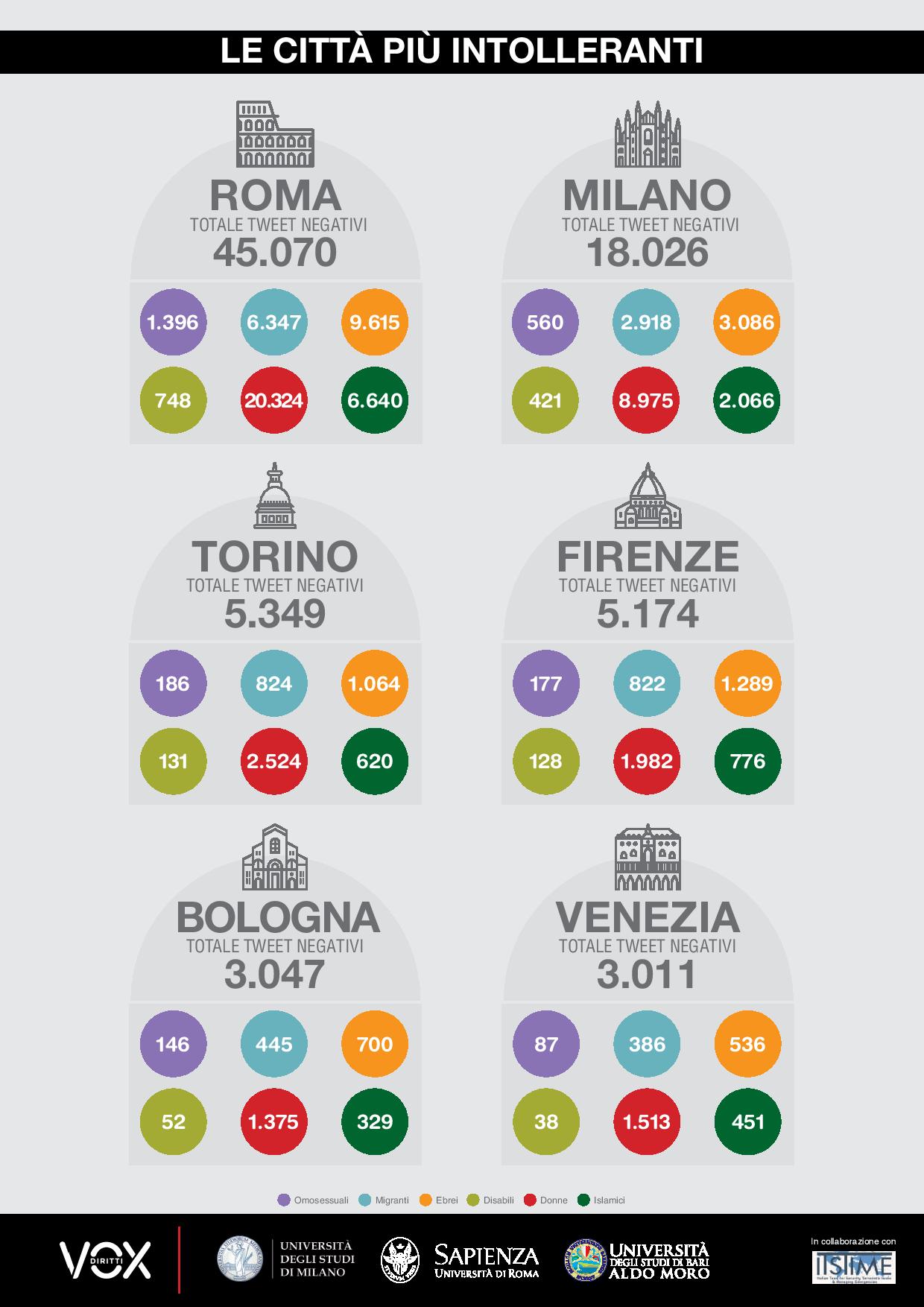
This is a machine translation from Italian language of a post published on Start Magazine at the URL https://www.startmag.it/mondo/odio-on-line-diminuisce-ma-si-radicalizza-report/ on Mon, 23 Nov 2020 11:27:37 +0000.
